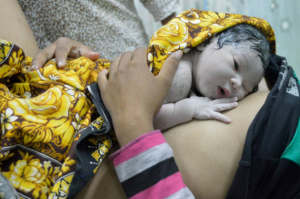Cambodia is a unique country that reflects its people’s innate conservatism. The country is still struggling to recover from the social destruction cause by the Khmer Rouge civil war that murdered an entire generation including many of the educated and professional population.
The current health system in Cambodia is crude, costly and unresponsive to the needs of the agrarian population. The country is Aid dependent and poverty is compounded by illiteracy, post traumatic inter generational stress, HIV/AIDS, drug resistant TB and maternal and child  malnutrition. Malnutrition and stunting is common in children deprived of healthy intra uterine development and weaning diets. Poor weaning diets that lack protein, vitamins and minerals compounds the deficit in child development.
malnutrition. Malnutrition and stunting is common in children deprived of healthy intra uterine development and weaning diets. Poor weaning diets that lack protein, vitamins and minerals compounds the deficit in child development.
Eighty percent of Cambodia’s population live in rural areas and survive on one dollar US a day.This is slowly changing with women from rural villages working in large factories and unemployed moving to Phnom Penh to find work..
The majority of health care, and primary health care, is provided by WHO Programs and NGO’s. Access to the public health system is supposed to be free to those who have a Poor Card, however, these cards are often hard to obtain. The health system in Cambodia is user pay and many poor people are unable to seek medical or hospital care and rural poor often forgo medical care because they are unable to travel long distances to pay for care.
Women’s traditional roles in Cambodia centre on family and food production. Pregnant women receive little ante or post natal care. At village level care is no nursing post is available care is commonly delivered by traditional Birth Attendants. Khmer women call birthing Crossing The River because they are never sure if they will get to the other side and they are aware that giving birth can be the most dangerous day of their lives.
Cambodia has the highest maternal mortality rate in Asia. Around five hundred women die in childbirth per 100.000 live births each year. Neo natal mortality is 31 deaths per 1,000 births in contrast with Australia where the statistic is 3 per 1,000 births.
Cambodia was unable to meet the Millennium Development Goals 4 and 5 and beyond 2015 target to reduce child mortality, by two thirds, between 1990 and 2015. Cambodia was unable to meet those these goals.

